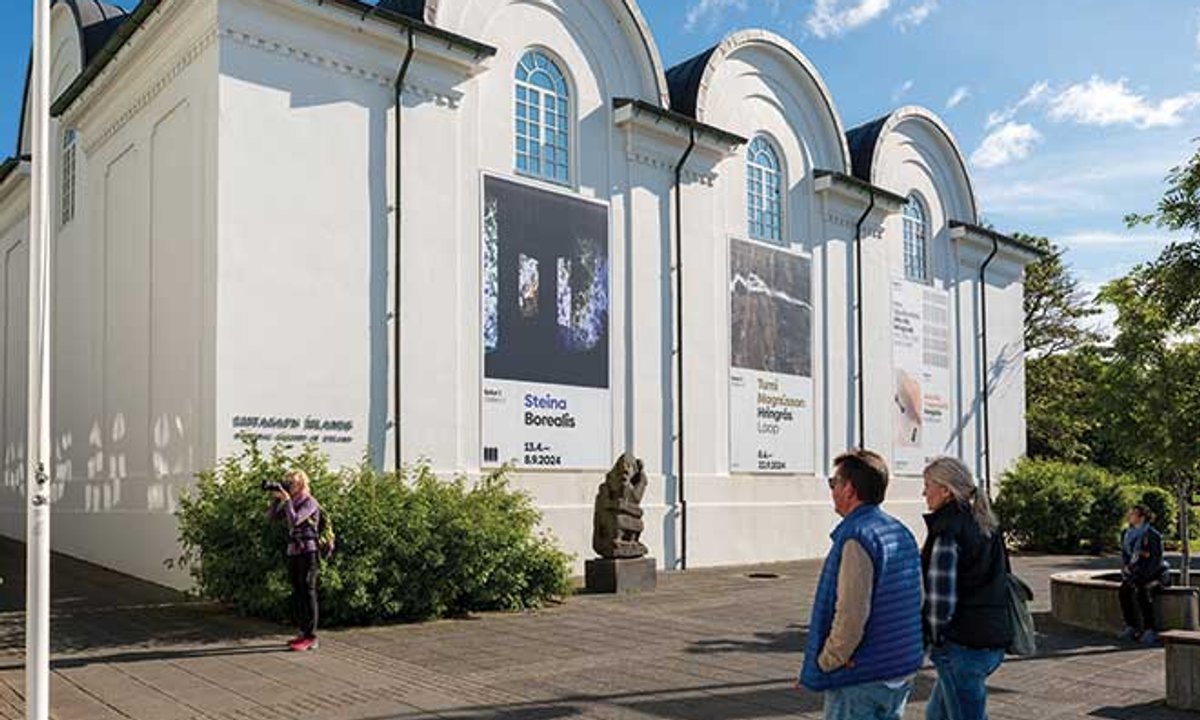Iceland is considering building a new space for its National Gallery to boost the profile of Icelandic art history and provide appropriate conditions for its collections after a report highlighted serious deficiencies in the museum’s existing spaces.
The national gallery, home to around 16,000 works, mostly from the 19th and 20th centuries, is currently housed across three locations in the capital of Reykjavik. These comprise a main site at Fríkirkjuveg, opposite the picturesque Tjörnin Lake in the city centre; the recently opened House of Collections; and the home and studio of the painter Ásgrímur Jónsson, open by appointment.
The culture minister, Lilja Alfreðsdóttir, published a new policy paper in May 2023 calling for a flourishing art sector that gains prominence locally and internationally. The policy paper’s action plan established a working group of independent experts to assess the national gallery and “form a future vision for the development of a world-class national gallery”.
The report, submitted in April, found several key areas where the museum was not fulfilling its mission. The site’s buildings were found particularly wanting.
“The exhibition spaces in the main building have significant limitations”, while the “hidden away” entrance of the main museum undersells the site, Mikkel Bogh, the former director of Copenhagen’s Statens Museum for Kunst (SMK), wrote in the report. In addition, he said, “The conditions for storage and conservation work are downright alarming from a museum professional’s perspective”. A leak in one of the main storage rooms meant that gallery staff recently had to move part of the collection of works on paper before a storm to avoid damage, according to Ingibjörg Jóhannsdóttir, the museum’s director.
Without suitable space to show, store and research art, the gallery has been unable to conserve or display some of the nation’s most important works. As a result, Jóhannsdóttir says, “the story of Icelandic art history has not been told.”
The Fríkirkjuveg location recently underwent renovation, but the gallery’s two main sites comprise only around 2,000 sq. m of “exhibition and media” space. The report found that around 4,500 to 5,800 sq. m is needed, and another 6,000 sq. m for storage and research.
Architectural competition
Several solutions are proposed, from expanding the current Fríkirkjuveg site to creating an entirely new space elsewhere in the city – perhaps close to Reykjavik’s impressive Harpa concert hall, built in 2011.
“I have a dream that we have built a visual arts museum that is located at the bay, by the Harpa music centre, and that you could cycle or walk between them,” says Alfreðsdóttir, the culture minister.
The cost of a new site is estimated at 15bn Icelandic krona (around $108m), a sum Alfreðsdóttir thinks is achievable. “Iceland is one of these countries that has abundant resources, whether it’s energy, fish, and we are a very popular destination, so we’re going to see growth of around 2%-5% in the next 20 years,” she says. The creative industries receive around 1.3% of the nation’s GDP in public funding, her ministry says, among the highest share in Europe. She hopes she can launch an architectural competition for an entirely new site before her term ends in autumn 2025.
Jóhannsdóttir says she would like to at least have a “clear plan forward” in the next two years, and for a new storage space to be available within that window. “I can just see it in my mind, how beautiful it would be to see the different dialogues we could make. There are just some incredible works that we’d love to have on display all the time.”







